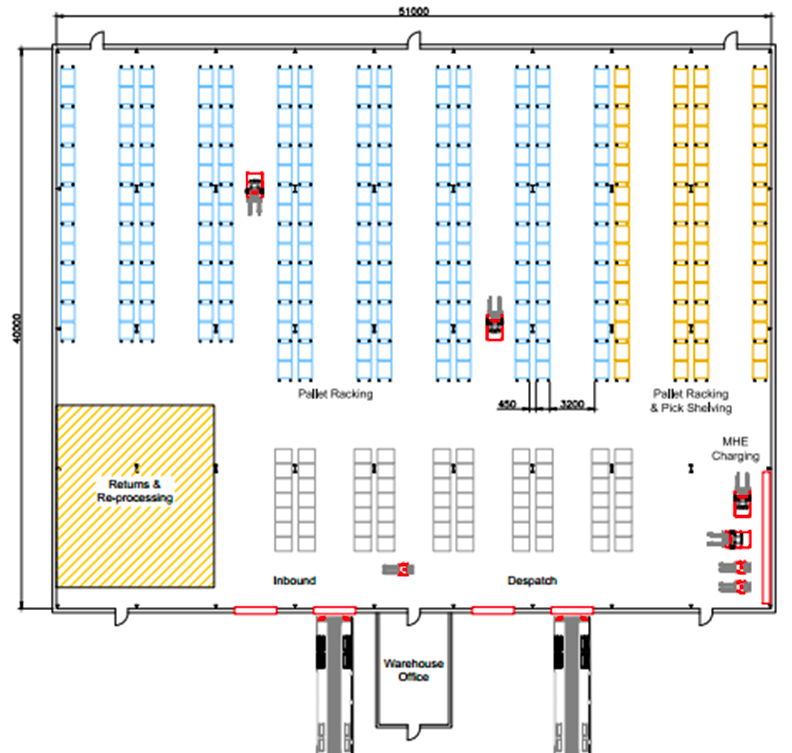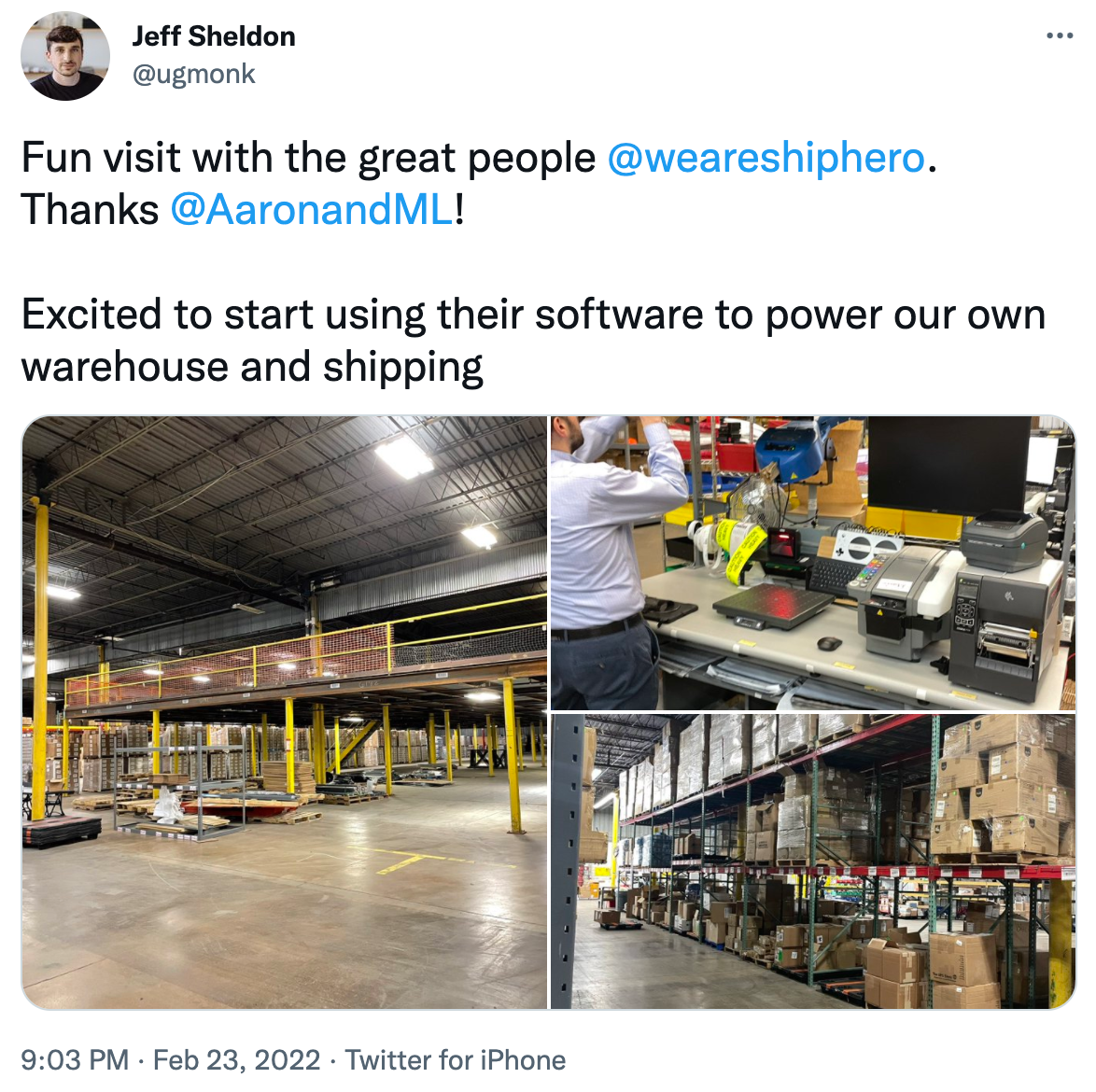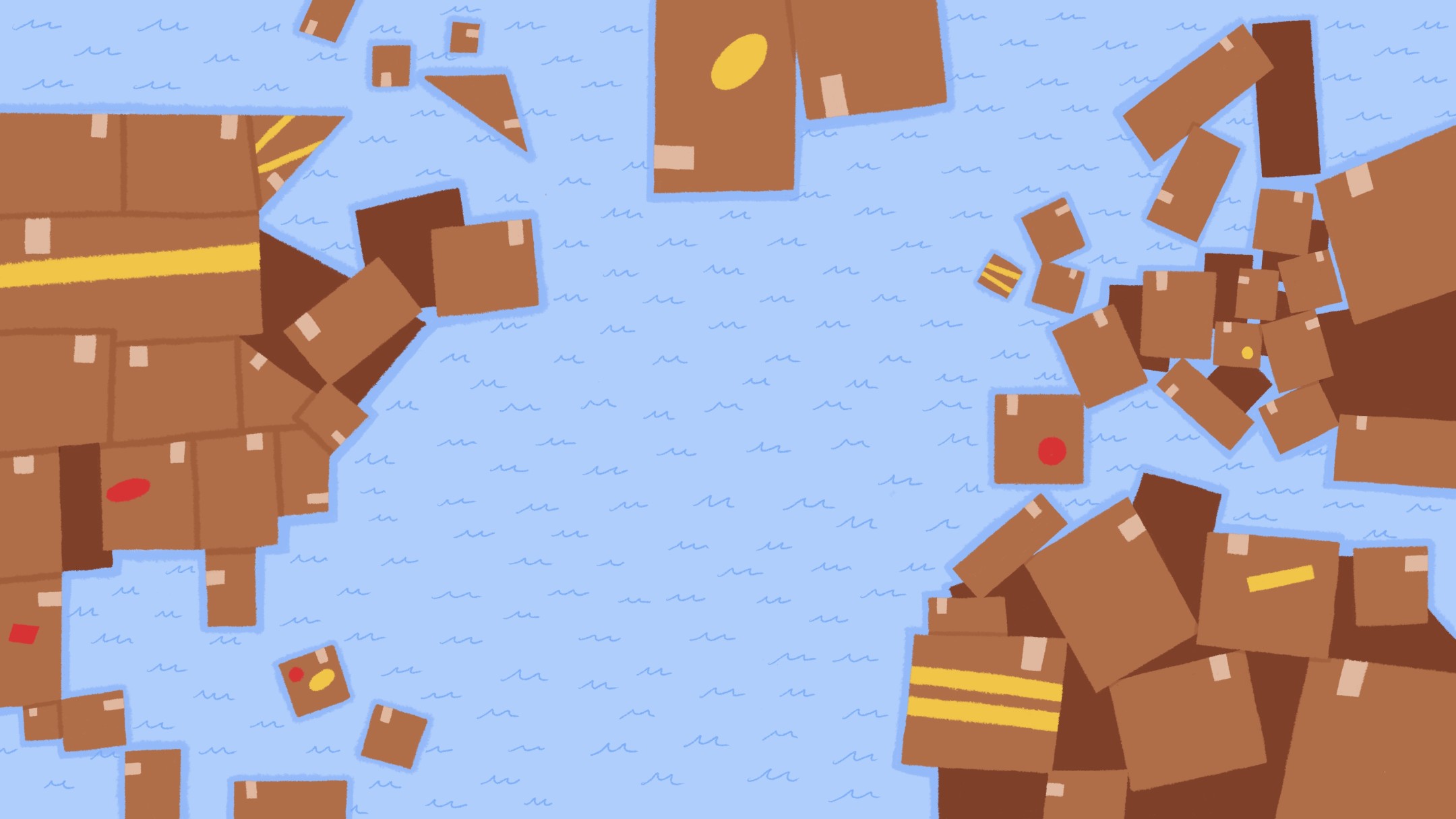Illustration by Diego Blanco
Scaling a global ecommerce brand is no small feat. Currencies, languages, and product preferences differ from country to country. Though one of thebiggest hurdles with international expansionis foreign warehousing.
In today’s global supply chain, international warehouses are your hubs. They ensure timely delivery of goods to far-flung customers at an affordable cost and with a minimum of shipping challenges.
Moreover, international order fulfillment is a key extension of your brand identity—giving your international customers the complete brand experience instead of getting a generic one from Amazon.
While there are challenges inherent in managing inventory distribution across multiple global locations, the benefits of international warehousing for your supply chain, shipping, and speed of order fulfillment are crucial to growing your sales across borders.
Table of contents
- What is an international warehouse?
- The 4 types of international warehouse
- When you need to use international warehouses
- How to choose the right international warehouse partner
- The costs associated with international warehouses and fulfillment
What is an international warehouse?
An international warehouse is a warehouse that’s set up internationally, typically located in a global trade hub like New York, Houston, or Hong Kong. This lets you deliver goods to your customers wherever they are, in a timely manner and with minimal challenges.
Take it from Ben Hyman, co-founder and CEO ofRevival Rugs, a retailer with warehouses in California, Turkey, Morocco, and India. He says, “This allows us to sell directly to the consumer, cutting out the middleman. When someone buys one of our products, the process is smooth, transparent, and affordable. Steep markups and costs that don’t add value are eliminated. We credit that to our international warehouses.”
The 4 types of international warehouse
Public warehouse
A public warehouse is open for any business to use, at the discretion of the warehouse operator. It’s usually the first choice for ecommerce businesses looking for an international warehouse, since they can pay a fee to access existing storage and fulfillment options outside their own country, without building the warehouse themselves.
Private warehouse
Unlike a public option, private warehouses are owned by private companies. Think of them as extensions of your business. If your headquarters are in the US, you could build a private warehouse—solely for your own use—in another country to cater to international shoppers.
Bonded warehouse
A bonded warehouse is a place for businesses to store inventory set to be imported or exported. Also known as a customs warehouse and run by the local government, it’s a way for businesses to bring products in or out of the country without paying tax or import duties.
Distribution center
An international distribution center is different from traditional warehousing. A warehouse stores goods, while distribution centers can do additional tasks like fulfill and package orders. Some operators offer both services under the same roof.
When you need to use international warehouses
Global shipping costs are growing year over year. Ecommerce giants likeAmazon are blamedfor rising warehousing costs, with retailers reportedlyfighting for warehouse spaceas an influx of new online stores contributes to a storage shortage.
国际仓储空间意味着削减hipping costs and shipping times, giving you an advantage with positive customer experience in an increasingly competitive delivery market.
For the most part, warehouses that are set up internationally will be located in global trade hubs like Hong Kong, Los Angeles, and Houston. No matter where your headquarters and manufacturing are located, strategically placed warehouses let you easily cross borders throughout Asia, Europe, and North America.
How to choose an international warehouse partner
The hard part in setting up an international warehouse revolves around finding a good partner and picking the right location.
1. Diversify your locations
Traditionally, choosing an international warehouse location has come down to figuring out where most of yourinternational customersare based.
In aninterview with 1-800-DTC, Ammar Moiz, founder ofMayple, said, “We consolidate the shipment with all the brands making their way to our distribution center in Dubai. This makes it not only cost efficient for everyone involved, but also better for the environment.
“Our brands ship their product to a local distribution center out in the US, the UK, or Australia—wherever the brand may be. From there, we arrange for the shipment to our distribution center in Dubai. From there, we fulfill orders to consumers all around the world.”
But the COVID-19 pandemic has shown us that this is no longer the only question to consider. What happens if there are lockdowns (for whatever reasons) in the region where your warehouse resides? Without access to your product, what will happen to your business in that area?
Centralized fulfillment centersnow represent single points of failure that can bring your business to its knees. You can ensure you serve your customers best by having a more diversified fulfillment strategy available to draw on in a crisis.
2. Consider shipping laws
When choosing where to partner, you also need to consider import and shipping laws. Check the legality of importing a product in a certain region through designated government websites.
Did you know, for example, that the FDA considers all sunglasses as medical devices and that your manufacturer has to be FDA approved? It is always important to check import regulations around a product before bringing it into a country.
To give you a small example of the complexities we manage, certain supplements might be banned in New Zealand, because they don’t allow for more than 1,000 IUs of vitamin D, which is pretty standard for the rest of the world. We make sure those logistical nuances are managed so we don’t have negative customer experiences downstream.”
—Ammar Moiz, Founder ofMayple
Still reeling from the impact of the COVID-19 pandemic, it's also more important than ever to have the full control of your inventory and shipping worldwide that international warehouses offer. Think of the frustration your customers feel when they experience delayed, stolen, ordamaged packagesat a time when so many people are relying on delivery service.
Evaluate the challenges that come with managing different shipping rules and regulations put in place by different countries in light of the pandemic. Can you get packages into quarantine zones from outside? Do you want returns coming back to your central warehouse from a foreign hot zone? Are you even able to take returns from these areas?
3. Check policies and procedures
Locations and costs aren’t the be all and end all of your decision making. When evaluating warehouses, the lowest price and best location won’t protect you from failure if your business isn’t well-suited for a particular warehouse.
Specific policies and procedures dictate the general conduct of a warehouse’s operation. Such policies should be clearly spelled out, and you need to check the warehouse’s track record of past clients to see how they’ve dealt with conflicts before. That includes:
- Management policy and procedures guideline
- Health and safety measurement
- Human resources management
- Security and pest control
- Maintenance and cleaning
- Quality control
- Record keeping and reporting
- Reverse logistics for returns
- Disposal of obsolete and damaged goods
Though these procedures should provide checks and balances, they must also have the flexibility to cater to unique situations. A good warehouse is focused on the end goal of a procedure, so it is common practice to limit the level of details in the procedures document.
4. Know your storage requirements
To understand your exact storage requirements, you’ll need to know the details of how your product is stored—be that on pallets, shelving, or temperature-controlled warehousing—and your expected sales volume in the area.
For instance, if you know you’re going to sell a lot of products in China during the Lunar New Year in February, it would be smart to move more inventory to that region to prepare for the sales season.
Other storage-related requirements on your international warehouse checklist include:
- Characteristics of goods to be stored
- Equipment available to handle the goods
- Estimated duration of storage needed
- Need for third-party logistic activities
- Size of the warehouse
- Past clients the warehouse has worked with
- Security of the warehouse
- Storage requirements of your company

Image from Go Supply Chain
When scouting international warehouse options, focus on a layout that facilitates growth and allocates you more space as you need it. You want your business to scale with the warehouse, instead of having to find a new one every year or two.
5.检查软件capabi国际仓储lities
Some36% of warehousessay the number of pallets they’veshipped internationallyover the past two years have increased. With this demand comes extra pressure. Make sure your partner is well-equipped to scale as your business does using warehousing technology like:
- RFID scanners
- Warehouse management software
- Collaborative robots, likeChuck
“As an integral part of your 3PL partnership, the key thing to look at in an international warehouse—beyond, services, space, and pricing—is what technologies they use,” says Robin H. Smith, co-founder ofVL OMNI, another Shopify Plus Technology Partner.
According to Robin, there are four levels of players:
- The big brands who are heavily invested in solid technology
- Those that use off-the-shelf software
- Those that have built it themselves
- Those that have limited technological experience and often run their businesses on spreadsheets
Robin says international warehouses that fall into the last category play on price: “Make sure your partner is giving you a clear picture of what their technology is, who supports it, and how flexible it is. Only then begin negotiating on price.”
Software should allow either the customer or the 3PL to quickly identify orders that need special attention or to make simple changes such as address changes, add or subtract an item, or add packer notes easily, all with a unique, secure login to the client's private 3PL account. Those changes need to be automatic, tracked, and instant.”
—Adam Rosenberg, Director of Operations atShipHero
6. Ask for references
有很多,选择一个全球战争ehouse. Minimize risk later down the line—and avoid choosing the wrong one—by asking each of the warehousing services on your shortlist for unbiased references.
“First, visit their facility to see what kind of products they’re shipping,” says Adam Rosenberg, Director of Operations atShipHero, a Shopify Plus technology partner.
“While on site, take note of the products that are similar to you and ask if you can speak to a few of the business owners—the specific companies and brands you’ve identified that that 3PL supports. Asking the 3PL to provide a reference is not reliable because they might have you speak to a client that is really small or a friend or relative that will only say good things.
“Second, find out what their procedures are for different items that are important to your business. One example is asking how they handle changes to an order, such as changing a customer’s address. If their answer is ‘Email us’ or ‘Call us,’ that's a red flag!”
7. Regularly visit the warehouse
The right international warehouse grows with your ecommerce business. Attend regular check-ins with your partners to make sure that’s possible. This warehouse checklist gives you a starting point on things to look at:
- Is the building kept clean and tidy?
- Are storage areas well lit and easily accessible?
- Are workers treated fairly? Do they look happy?
- Are health and safety measures in force?
- Can you see fire alarms, extinguishers, and fire doors?
- Is technology in place to speed up the storage and fulfillment process?
“It’s important to visit your international warehouses on a regular basis. This ensures your products meet your quality specifications and that workers are treated fairly.” —Ben Hyman, co-founder and CEO ofRevival

8. Look for third-party logistics services
建立国际仓库可以更有限公司mplex than setting up multiple storefronts or global marketing campaigns. You will not only face different rules and regulations in each country, but also potential language barriers and cultural differences.
Working with athird-party logistics (3PL)company at an international warehouse will optimize your global logistics ability while helping optimize your supply chain. You will cut out the cost of duties on your products when they are shipping locally, which should make your international shipping smoother.
When looking for a 3PL partner, evaluate whether you needreverse logisticssolutions included in the service. Some10.6%of all online-bought items are returned to the retailer. An international warehouse with the capacity to handle these returns allows shoppers to ship products back to their nearest warehouse.
Watch: 3 Signs You Need a 3PL
The reverse logistics provider receives and approves the return based on your qualifying criteria. The money is refunded to the customer within a few days, and the returned product is back on the warehouse shelf to be resold. It reduces the cost of shipping, is better for the environment than shipping individual packages to your HQ, and is faster to process.
Either way, Robin H. Smith, co-founder of VL OMNI, has a word of warning: “Too often we see customers locked into a 3PL with no way to move away. The desire to move usually happens when a company starts to scale and they need multiple 3PLs in different countries, or when the existing 3PL provides poor service.
“Steer clear of any 3PL that wants to take over and control all the channels in your business. You have to ask yourself: what is their core business? Is it being a 3PL warehouse or an agency?”
The costs associated with international warehouses and fulfillment
The costs associated with warehouses are typically broken down by your warehousing partner between actual warehouse and fulfillment costs.
Warehousing costs
Warehousing costs will include things like the lease, employee salary, equipment costs, and the electrical bill. They are usually included under the umbrella of a total warehousing fee.
Most warehousing partners will have minimum monthly fees that they charge their clients regardless of whether the client has had a slow month of fulfillment, though you may get a discount on larger orders.Almost halfof fulfillment companies offer discounts based on bulk storage needs.
Fulfillment costs
Fulfillment costs, on the other hand, are billed when items begin moving. A 3PL will bill you when it receives inventory, package and ship orders, and handle reverse logistics.Fulfillment companiesshares estimated costs to factor into your international warehousing budget:

International customers and global warehouses
With an international warehouse, you can create a better experience for your customers abroad while drastically improving your shipping times. The worst-case outcome would be not ultimately needing the space because your international sales don’t spike as you expect.
But the real magic moment will come when your international warehouse feels like a fully integrated part of your business, even if it’s thousands of miles away from your home base.
Common Questions Related to International Warehouse
What are international logistics?
International logistics are the flow of inventory across several countries. For example, an ecommerce brand can have its headquarters in a trade hub like Houston. Its international logistics process would transfer inventory to other global warehouses, like one in China or Germany, to reach international customers.
What are the main methods for cross-border ecommerce logistics?
跨境电子商务逻辑学的主要方法ics include directly shipping to overseas customers and stocking inventory in warehouses located in free trade zones.
What is the role of warehousing in logistics?
Warehouses store inventory before they’re sold to international customers. By having products readily available for cross-border shoppers, you can ship items to their home within as little time possible.
How do I choose a warehouse location?
To choose a warehouse location, consider factors like where your customers are located, where carriers are located, and your product storage requirements, to name a few.






